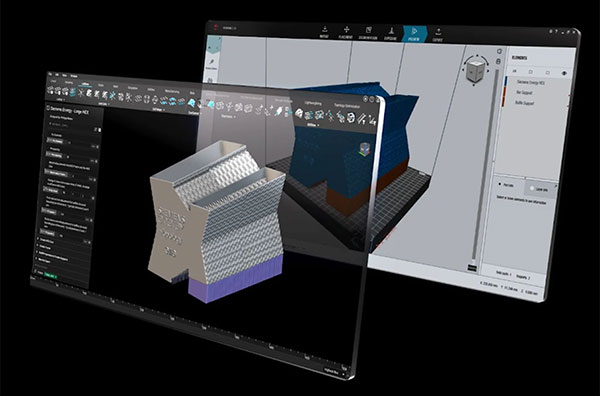nTop 4 Now on Market
In nTop 4, a new capability called Field Optimization is a multi-objective, multi-scale and closed-loop optimization capability that is a means to design complex, high-performance parts.

Using the nTop Plugin for EOSPRINT, directly import complex nTop designs into EOSPRINT without the challenges of mesh-based data transfer. This will be available with EOSPRINT 2.14, to be released in June 2023. Image courtesy of nTopology.
Latest News
May 9, 2023
nToplogy introduces nTop 4, the next major release of its software, purpose-built to harness the design options enabled by additive manufacturing.
In nTop 4, there is a new capability called Field Optimization, a multi-objective, multi-scale and closed-loop optimization capability that is a means to design complex, high-performance parts, the company says. The approach relies on a combination of implicit modeling technology, Field-Driven Design approach, and a generalization of the company's existing topology optimization framework. This new capability allows engineers to focus on specifying the design intent and requirements of the part while letting the software automatically determine the complex geometric details such as lattice layouts, wall thicknesses, rib patterns and/or other spatially-varying parameters.
Use of Field Optimization is similar to that of traditional topology optimization. The most noticeable difference is that the underlying “material model” used to compute the properties of the structure is now a function of any number of geometric design parameters, rather than just a single value, such as material density.
For example, to optimize a satellite bracket for the NASA EXCITE challenge the company started by using a traditional topology optimization to get the global shape and then applied a “shell and infill” optimization to optimize the weight and stiffness of the part. This resulted in a part that was twice as durable under vibration loading conditions (the driving requirement for this part) while still coming in light in weight.
A second application of Field Optimization is the design of a hip implant engineered to fuse with bone. To generate a comfortable implant that lasts a long time, effective mechanical properties at the surface of the implant are needed to match that of the bone to reduce stress shielding effects, according to nTopology. Here the company used numerical homogenization to derive an analytical relationship between multiple design parameters for the variable cellular structure and its expected mechanical properties (e.g., stiffness, relative density, etc.).
For more product details, click here.
Sources: Press materials received from the company and additional information gleaned from the company’s website.
Subscribe to our FREE magazine, FREE email newsletters or both!
Latest News
About the Author
DE’s editors contribute news and new product announcements to Digital Engineering.
Press releases may be sent to them via [email protected].





